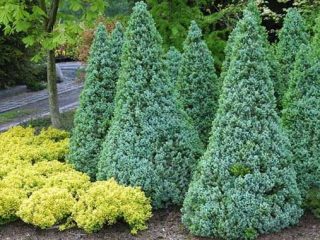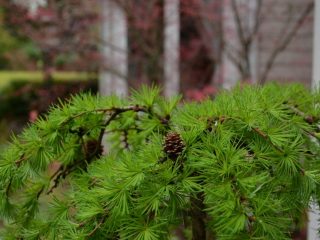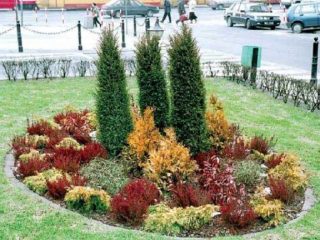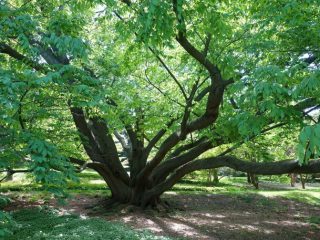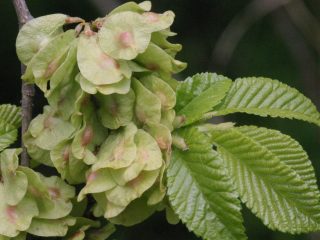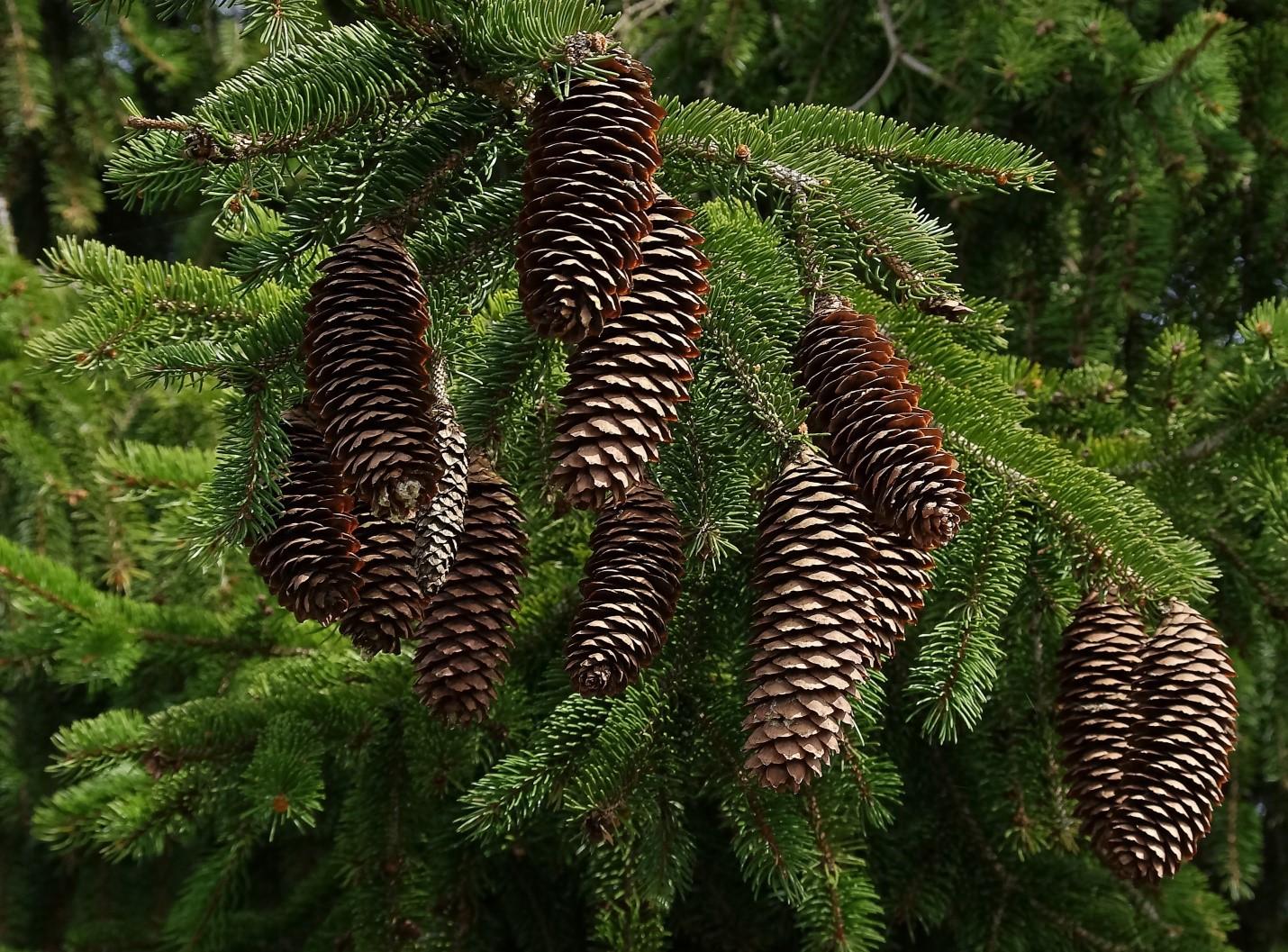Content
Aralia Manchurian (tall), also called thorn tree, devil tree, is a deciduous tree from the family of the same name. This is a medicinal plant that is also used to decorate the garden. Any gardener can grow it - the basic rules and tips are described in this article.
Description of Manchurian Aralia
Manchurian Aralia (Aralia mandshurica) is represented by a tree of medium height (from 3 to 4 m). Its trunk is straight, of medium thickness, 12-20 cm in diameter. Numerous thorns are noticeable on it, as well as on the petioles.
The roots lie superficially, diverge radially, and penetrate only up to 25 cm in depth. Then, after 3 m from the center of the trunk, they sharply go down and can bend up to 60 cm. At the same time, they produce quite a lot of underground layering.
The leaves of Manchurian Aralia are very large, reaching 80-100 cm in length.The leaf blades are of a complex type, double pinnate - each consists of 2-4 lobes. The color is dark green, the surface is matte.
The botanical description also provides characteristics of the Manchurian Aralia flowers. They are small but numerous, white or cream in color. They are collected in inflorescences in the form of umbrellas, each of which consists of tens of thousands of individual flowers (up to 70 thousand). In this case, the total diameter reaches 40-45 cm. Flowering occurs in the second half of summer.
At the end of flowering, Manchurian Aralia forms fruits - they appear at the end of September or at the beginning of October. The color is blue-black, looks like a berry, contains five small seeds, the diameter of each of them is within 5 mm.
Where does Aralia Manchurian grow?
The name of Manchurian Aralia is associated with its habitat. The tree is found in China, Korea, and Japan. In Russia, it grows in the regions of the Far East, including the Primorsky Territory, Sakhalin and the Kuril Islands.
Manchurian Aralia grows mainly in small groups, but can also be found alone. The tree can be found in the undergrowth of both coniferous and mixed forests. It mainly grows in clearings, edges and other bright places. It is found both on the plains and in the foothills (up to 2700 m above sea level).

In Russia, Manchurian Aralia is found in the Far East
Chemical composition of Manchurian aralia
The foliage contains quite a lot of useful substances - among them there are nutritional components and valuable compounds:
- proteins;
- cellulose;
- sugar;
- essential oils;
- vitamins B1 and B2;
- saponins;
- flavonoids;
- organic acids;
- fatty acid;
- mineral elements.
Medicinal properties of Manchurian aralia
Thanks to the rich chemical composition, the leaves and roots of Manchurian aralia have a beneficial effect on the human body:
- stimulation of the nervous system;
- stimulation of heart function;
- decreased sleep duration;
- increased muscle tone;
- anti-stress effect;
- improved digestion and energy metabolism;
- restorative effect after illness;
- stimulation of the respiratory system;
- increased blood pressure;
- decreased blood sugar levels;
- improved appetite;
- decreased feeling of fatigue.
Harm of Manchurian Aralia and contraindications
Also, do not forget about the side effects of using tinctures, decoctions and other forms of preparations based on Manchurian Aralia:
- increased blood pressure;
- increased heart rate;
- insomnia;
- allergic reactions.
You should avoid taking medications in the following cases:
- high blood pressure;
- nervous excitability;
- individual intolerance to any component;
- epilepsy;
- hyperkinesis.
Use in folk medicine
For medicinal purposes, a decoction of the roots or an alcohol tincture is most often used. In the first case, use the following recipe:
- Measure out 20 g of dry raw materials (2 tablespoons).
- Pour a glass of hot water.
- Boil over low heat for half an hour.
- Strain and squeeze, bring to the original volume.
- Take a tablespoon three times a day before each meal.The general course is three weeks.
You can also purchase a ready-made tincture of Manchurian aralia. It is taken 40 drops twice a day (in the first half of the day) after meals. The course of treatment lasts 3-4 weeks, after which you need to take a break. You can repeat the cycle in consultation with your doctor.

The tincture is sold in pharmacies at an affordable price
How to plant Aralia Manchuria
Manchurian aralia is planted in early spring before the buds begin to swell or in mid-autumn, after the end of leaf fall. When choosing a location, you should pay attention to several points:
- good lighting (shading in the afternoon is desirable);
- no stagnation of water;
- a fairly large area (minimum distance to the building 3 m).
It is better to prepare for landing in advance. It is recommended to dig up the soil and apply complex fertilizer or humus. It is also important to carry out thorough treatment against pests (mole crickets, chafers), since they cause great damage to the root system of the tree.
The process of planting Manchurian Aralia looks like this:
- Dig a hole 40 cm deep and 80 cm wide. The interval between adjacent holes is at least 3 m.
- Small stones are placed at the bottom.
- Then they place the seedling in the center and straighten the roots.
- Bury with fertile soil.
- Compact it so that the root collar goes to a shallow depth.
- After this, give a bucket of settled water and after a few days lay a layer of mulch.
Caring for Aralia Manchurian
Manchurian Aralia is an unpretentious plant, so growing it is quite simple. Water is given only when necessary, when there is a long drought. However, it is better to water young seedlings weekly.
The soil is periodically loosened and weeds are carefully removed.To keep them as small as possible, it is advisable to put straw, sawdust or other mulch.
It is recommended to apply fertilizers at the stage of bud formation. To do this, give complex fertilizer, slurry or mullein infusion 1:10. At the end of summer, it is advisable to water the tree trunk circle with an infusion of wood ash (200 g per 10 l).
Disease and pest control
Aralia Manchurian is rarely affected by fungi. The crop is accustomed to growing in conditions of high humidity, but it is still recommended to follow the watering norm. If plaque, foreign spots and other signs of infection appear, it is necessary to treat with fungicides as quickly as possible:
- "Bordeaux mixture";
- "Ordan";
- "HOM";
- "Tattu."
Of the insects, mole crickets and chafers are especially dangerous. You need to fight it with insecticides:
- "Inta-Vir";
- "Karbofos";
- "Ephoria";
- "Decis".
Slugs can also cause some damage. To scare them away, you can sprinkle nut shells or eggshells around the tree trunk. Special preparations are also used - “Thunderstorm” or “Ulitsid”.
Reproduction methods
Aralia Manchurian can be grown from seeds or propagated by root suckers. The first method is used quite rarely, since seedlings appear slowly. Seeds are planted in open ground in early spring, covered with a jar, regularly watered and ventilated.
But it is easiest to wait for the appearance of root shoots on layers located superficially. It is worth waiting until they reach a height of 25 cm. Then the Manchurian Aralia shoot is cut off from the mother tree and planted in fertile soil.It is better to do this in the first ten days of October.
Use in landscape design
Aralia Manchurian is a fairly large tree. Most often it is used in single plantings, for example, against a lawn. The compositions and hedges also look beautiful. The main applications in landscape design are presented below:
- Single landing.
- Aralia Manchuria next to the path.
- Landing close to home.
Conclusion
Aralia Manchurian is not only a beautiful tree, but also a valuable medicinal plant. It has a tonic and restorative effect. Decoctions and tinctures will be especially useful for people with asthenic syndrome, with signs of increased fatigue. The plant itself is unpretentious; if desired, it can be grown even on depleted soil.
Reviews of Manchurian Aralia



